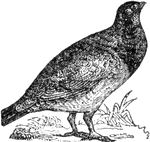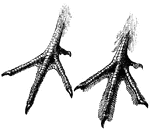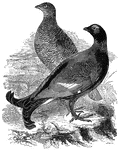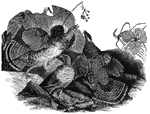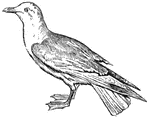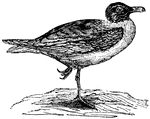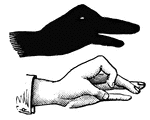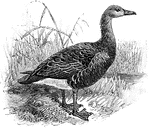
Greylag Goose
The Greylag Goose (Anser anser) is a bird in the Anatidae family of ducks, geese, and swans. It was…
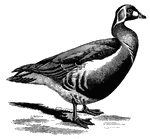
Red-breasted Goose
Bernicla ruficollis, the Red-breasted Goose of West Siberia, which migrates southwards, strays to Britain…
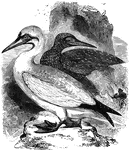
Soland Goose
Also known as common gannet and as the channel-goose, the soland-goose is common to the sea between…
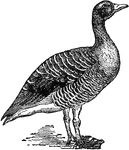
Wild Goose
"Goose is the name of a well-known family of natatorial birds. The domestic goose is believed to have…

Goshawk
"The American goshawk &mdash the black-cap haw of Wilson &mdash A. atricapillus which has been…
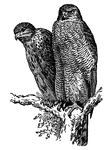
Goshawk
The Goshawk (Astur palumbarius) is a hawk abundant in the forest regions of northern Europe and Canada,…

Grallatores
A group of Grallatores, an order with characteristically long legs, well suited for wading in shallow…
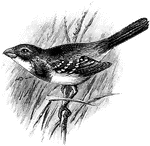
Morelet's Grassquit
"Morelet's Grassquit (Spermophila moreleti); adult male. GRASSQUIT. A kind of grassfinch; an American…
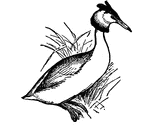
Great Crested Grebe
The Great Crested Grebe (Lophæthyia cristata) is a fresh-water, migratory, diving bird of the family…
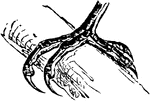
Foot of a Great Jacamar
The foot of a Great Jacamar, a bird belonging to the Scansores order. Scansores is an order of birds,…

Head of a Great Jacamar
The head of a Great Jacamar, a bird belonging to the Scansores order. Scansores is an order of birds,…

Grebe
Diving birds, such as the grebe, have webbed (or lobed) feet and are expert in swimming and diving.
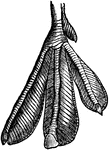
Foot of Grebe
"In this foot each toe is provided with its swimming membrane; the membrane being closed when the foot…
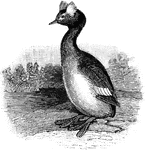
Horned Grebe
The Horned Grebe (Podiceps cornutus) is a freshwater diving bird in the Podicipedidae family of grebes.

Little Grebe
"Both sexes of the Little Grebe are mainly dusky brown or blacking grey above, and silvery white below,…
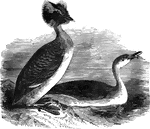
Sclavonian Grebe
Also known as the horned grebe, dipper, water-witch, and hell-diver, the sclavonian grebe is common…
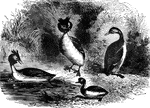
Grebes
Expert swimmers, grebes hunt fish, frogs, crustaceans, and insects in both salt and fresh water.

Greek War-Ship with Three Rows of Oars
Illustration of a Greek war-ship from the 5th century BC. There are two masts, a large decorative bird…
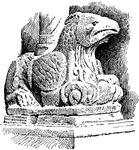
Griffin
"Medieval Griffin. Porch of the Duomo, Verona, Italy. GRIFFIN. In mythology, an imaginary animal supposed…
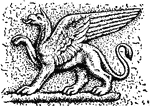
Griffin
"Griffin, from a Greek Sarcophagus. GRIFFIN. In mythology, an imaginary animal supposed to be generated…
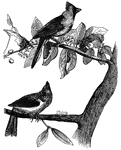
Cardinal Grosbeak
Noted for its beautiful song, the cardinal grosbeak is sometimes known as the virgin nightingale.

Green Grosbeak
Also known as the green finch, the green grosbeak frequents gardens, orchards, small woods, and cultivated…

Pine Grosbeak
Found in the northern parts of America and Europe, the pine-grosbeak feeds mostly on seeds.
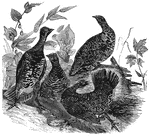
Canada Grouse
Also known as the spotted or spruce grouse, the Canada grouse is found in the northerly latitudes of…
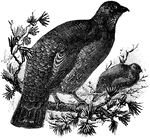
Dusky Grouse
The Dusky Grouse (Dendragapus obscurus) is a bird in the Phasianidae family of pheasants and partridges.
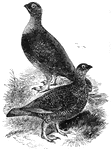
Red Grouse
Native only to the British Isles and the Orkneys, the red grouse is often bred in confinement to be…
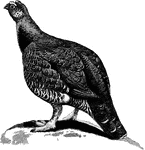
Red Grouse
"Lagopus scoticus, the Red Grouse or Muirfowl, the only bird entirely confined to our islands, differs…
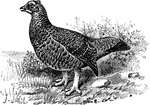
Red Grouse
The Red Grouse (Lagopus lagopus scoticus) is a subspecies of ptarmigans in the Phasianidae family of…

Ruffed Grouse
The ruffed grouse lives in the woods. It makes a loud noise by beating its wings rapidly (drumming).
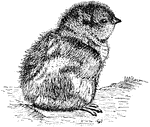
Young Grouse
Grouse are a group of birds from the order Galliformes. Often considered a family Tetraonidae, the American…
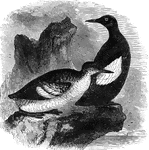
Black Guillemot
Found in the arctic regions of Europe and America, the black guillemot averages about thirteen inches…

Black Guillemot
The Black Guillemot (Cepphus grylle) is a bird in the Alcidae family of Auks. It was also known as the…
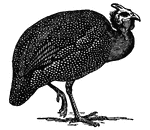
Guinea Fowl
Guinea Fowl are the African representatives of the pheasants, from which they differ in that the plumage…
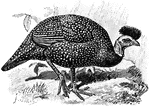
Crested Guineafowl
The Crested Guineafowl (Guttera pucherani) is a bird in the Numididae family of guineafowls. It was…

Black-headed Gull
"A long-winged water-bird with webbed feet, inhabiting all parts of the world. The group to which gulls…

Great Black Backed Gull
"A long-winged water-bird with webbed feet, inhabiting all parts of the world. The group to which gulls…
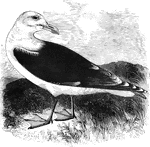
Great Black-Billed Gull
Feeding chiefly on fish, the great black-billed gull has been known to feed on small birds.
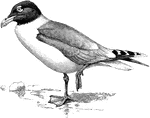
Great Black-Headed Gull
"Larus ichthyaetus, the Great Black-headed Gull, ranging from the Black Sea and the Levant to Tibet,…

Herring Gull
"A long-winged water-bird with webbed feet, inhabiting all parts of the world. The group to which gulls…
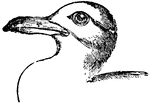
Killiwake Gull
"A long-winged water-bird with webbed feet, inhabiting all parts of the world. The group to which gulls…
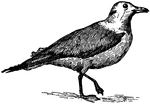
Kittiwake Gull
The Kittiwake gull (Rissa tridactyla) is a sea-gull characterized by the absence of the hind toe. It…
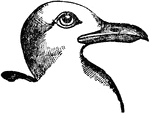
Small Black-Backed Gull
"A long-winged water-bird with webbed feet, inhabiting all parts of the world. The group to which gulls…

Hammerhead Standing Near Water
"Scopus umbretta, the Hammerhead, of Madagascar and a large part of the Ethiopian Range, is purplish-brown,…
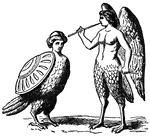
Harpies
"These were disgusting birds, with the heads of maidens, with long claws and faces pale with hunger.…





